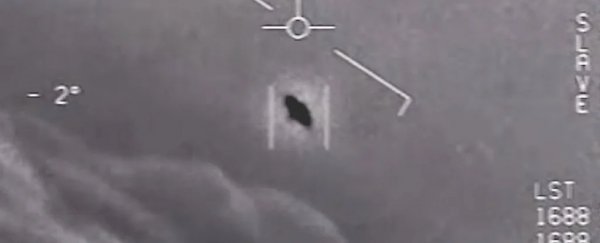Now officially known as unidentified anomalous phenomena (UAPs), 'UFOs' have certainly long captivated our curiosity.
NASA commissioned a study team in 2022 to investigate such hard-to-easily-classify reports, and tomorrow they're revealing the highly anticipated findings at a media briefing.
The scarcity of high-quality observations of UAPs – defined as objects in the sky that are inconsistent with known naturally occurring phenomena or aircraft – makes scientific conclusions about their nature rather impossible.
So NASA assembled an independent team of 16 scientific, aeronautic, and data analytic experts with the primary goal to advise NASA on UAPs from a logical and scientific perspective.
"We have access to a broad range of observations of Earth from space – and that is the lifeblood of scientific inquiry," NASA's Thomas Zurbuchen said last year before the commencement of the study.
"We have the tools and team who can help us improve our understanding of the unknown. That's the very definition of what science is. That's what we do."
After starting in October last year, the team chaired by astrophysicist David Spergel of the Simons Foundation, has spent nine months laying the groundwork for NASA and other organizations to conduct their own research.
"The primary objective of this incredible team of experts is not to go back and look at grainy footage of UAPs but rather to give us a roadmap to guide us for future analysis," explained Daniel Evans, the NASA official in charge of the study, during an update meeting in May.
The media briefing at NASA's headquarters in Washington is scheduled for 14:00 UTC on 14 September 2023 (10:00 EDT on 14 September and 00:00 on 15 September in AEST). You can watch it live below.

A full report containing the independent team's findings will be released tomorrow too, suggesting a strategy for future analysis of UAP data by NASA.
"All of NASA's data is available to the public – we take that obligation seriously – and we make it easily accessible for anyone to see or study," Evans said last year.
The study wasn't intended to answer all the questions. The researchers focused on how civilian government data, commercial data, and other sources could be organized and analyzed in the future to shed more light on obscure sky sights, but they didn't look at classified information.
"Unclassified data make it possible for our team to communicate openly to advance our understanding of UAP not only with each other, but across the scientific community and to the public," NASA's head of science, astrophysicist Nicola Fox, explained.
One of NASA's missions is to ensure the safety of aircraft, so this study aligns with that as well as with the interests of national security in the study of UAPs.
The team investigated potential enhancements to air traffic management to acquire data on future reported UAPs and analyzed the challenges of studying UAPs and their potential risk to US national airspace.
"By understanding the nature of UAPs we can ensure that our skies remain a safe space for all," Evans said in May during the meeting.
The research will report on which scientific methods should be applied, what else NASA should collect to understand UAP, and what are the fundamental physical constraints on UAP's origins and nature.
"We recognize that public interest in UAPs is high, and that the demand for answers is strong," Evans said.
"It is now our collective responsibility to investigate these occurrences with the rigorous scientific scrutiny that they deserve."
We can't wait to find out more.
